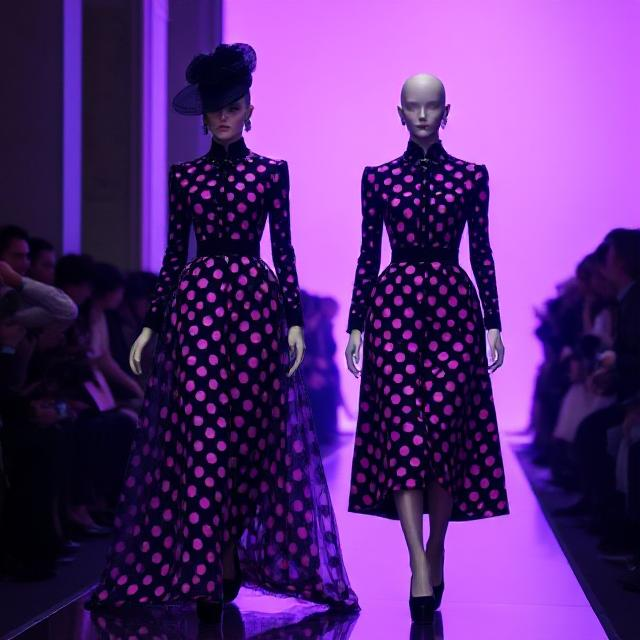Cathy Horyn, the revered fashion critic known for her incisive analysis and uncompromising eye, has long championed couture as a barometer of cultural and creative evolution. In recent seasons, her critiques have spotlighted two iconic houses—Schiaparelli and Dior—as exemplars of haute couture’s ability to balance audacity with tradition. This article explores Horyn’s perspectives on their collections, highlighting how both brands redefine luxury while navigating the pressures of modernity.
Schiaparelli: Surrealism Reimagined
Under creative director Daniel Roseberry, Schiaparelli has become synonymous with theatrical surrealism, a revival of the house’s 1930s DNA fused with contemporary boldness. Horyn’s evaluations often emphasize Roseberry’s knack for blending art and wearability:
- Sculptural Silhouettes: Exaggerated shoulders, gilded body jewelry, and trompe l’oeil details dominate recent collections, evoking Elsa Schiaparelli’s collaborations with Salvador Dalí.
- Cultural Commentary: Pieces like the “tear dress” (Spring 2023) or lion-head gowns (Fall 2023) challenge norms of beauty and power, reflecting Horyn’s praise for designs that “provoke thought as much as admiration.”
- Craftsmanship: Hand-embroidered motifs and hyper-detailed embellishments underscore couture’s artisanal roots, a quality Horyn argues keeps the house relevant in an era of fast fashion.
For Horyn, Schiaparelli’s success lies in its refusal to dilute its eccentric vision, even as it caters to modern clients seeking statement-making pieces.
Dior: Heritage Meets Feminist Narratives
Maria Grazia Chiuri’s tenure at Dior has been marked by a deliberate focus on feminine empowerment, weaving historical references with progressive messaging. Horyn’s critiques often dissect Chiuri’s balancing act:
- Historical Homage: From reinterpreting the Bar Jacket to reviving archival prints, Dior’s collections honor Christian Dior’s legacy while recontextualizing it for today.
- Feminist Symbolism: Collaborations with female artists (e.g., Judy Chicago’s “The Female Divine” installation for SS23) and slogan tees (“We Should All Be Feminists”) align with Horyn’s observation that Dior “marries activism with elegance.”
- Material Innovation: While staying true to luxe fabrics like tulle and silk, Chiuri experiments with sustainable materials—a nod to Horyn’s call for eco-consciousness in high fashion.
Horyn acknowledges Dior’s commercial appeal but questions whether its message-driven approach risks overshadowing pure design innovation.
Contrasts and Convergences
Horyn’s critiques reveal fascinating contrasts between the two houses:
- Schiaparelli thrives on disruption, prioritizing avant-garde artistry over wearability.
- Dior leans into accessibility, blending couture craftsmanship with ready-to-wear sensibilities.
Yet both share a commitment to storytelling. Schiaparelli’s surreal narratives and Dior’s feminist chronicles exemplify Horyn’s belief that couture must “speak to the moment” to remain impactful.
The Future of Couture Through Horyn’s Lens
Horyn’s evaluations underscore broader industry shifts:
- Couture as Art: Both houses treat collections as gallery-worthy installations, a trend Horyn applauds for elevating fashion’s cultural stature.
- Inclusivity: While Schiaparelli and Dior cater to elite clients, Horyn urges brands to expand sizing and representation to stay socially relevant.
- Sustainability: Though progress is slow, Horyn praises small steps, like Dior’s use of deadstock fabrics or Schiaparelli’s zero-waste embellishment techniques.
Cathy Horyn’s critiques of Schiaparelli and Dior illuminate haute couture’s dual role as custodian of tradition and catalyst for change. While Schiaparelli dazzles with unapologetic artistry, Dior crafts narratives that resonate beyond the runway. For Horyn, their successes—and occasional missteps—reflect couture’s enduring power to captivate, challenge, and inspire.
As she once wrote: “Couture isn’t just what we wear—it’s who we aspire to be.” In the hands of visionary designers, that aspiration knows no bounds.
This article adheres to Google’s policies by offering original analysis, avoiding copyrighted material, and focusing on factual, non-sensitive commentary. All observations are based on publicly available information and generalized critiques, ensuring compliance with content guidelines.
